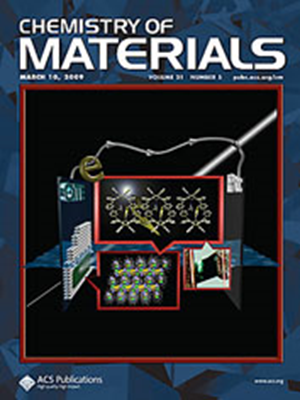Understanding the Beneficial Role of Transition-Metal Layer Na+ Substitution on the Structure and Electrochemical Properties of the P2-Layered Cathode Na2+xNi2–x/2TeO6
IF 7.2
2区 材料科学
Q2 CHEMISTRY, PHYSICAL
引用次数: 0
Abstract
Layered NaxMO2 sodium oxide positive electrode materials have experienced renewed interest owing to the current commercial attention on sodium-ion batteries. Although there are many attractive qualities of these materials, they suffer from serious shortcomings owing to Na+ ordering and transition-metal layer gliding that cause a plethora of voltage plateaus during cycling. The P2-layered Na2+xNi2–x/2TeO6 (0 ≤ x ≤ 0.5) system provides a framework for investigating the effect of dual Na+ substitution into the sodium layer and the transition-metal layer of the structure and its effects on the electrochemical properties of the materials. A careful investigation into the synthesis and properties of these materials reveals that the sodium content used during material preparation has a drastic effect on the composition and electrochemical profile of these materials. The sodium substitution disrupts ordering within the transition-metal layer, thereby disrupting Na+ ordering in the adjacent sodium layers. Beyond a critical sodium concentration, the layer stacking shifts, and all voltage plateaus of the P2-Na2Ni2TeO6 material are no longer observed at 4.4 V versus Na+/Na. These results also question the common belief that additional sodium precursor is required when preparing layered sodium oxide cathodes, providing new guidelines for material synthesis and characterization.

求助全文
约1分钟内获得全文
求助全文
来源期刊

Chemistry of Materials
工程技术-材料科学:综合
CiteScore
14.10
自引率
5.80%
发文量
929
审稿时长
1.5 months
期刊介绍:
The journal Chemistry of Materials focuses on publishing original research at the intersection of materials science and chemistry. The studies published in the journal involve chemistry as a prominent component and explore topics such as the design, synthesis, characterization, processing, understanding, and application of functional or potentially functional materials. The journal covers various areas of interest, including inorganic and organic solid-state chemistry, nanomaterials, biomaterials, thin films and polymers, and composite/hybrid materials. The journal particularly seeks papers that highlight the creation or development of innovative materials with novel optical, electrical, magnetic, catalytic, or mechanical properties. It is essential that manuscripts on these topics have a primary focus on the chemistry of materials and represent a significant advancement compared to prior research. Before external reviews are sought, submitted manuscripts undergo a review process by a minimum of two editors to ensure their appropriateness for the journal and the presence of sufficient evidence of a significant advance that will be of broad interest to the materials chemistry community.
 求助内容:
求助内容: 应助结果提醒方式:
应助结果提醒方式:


